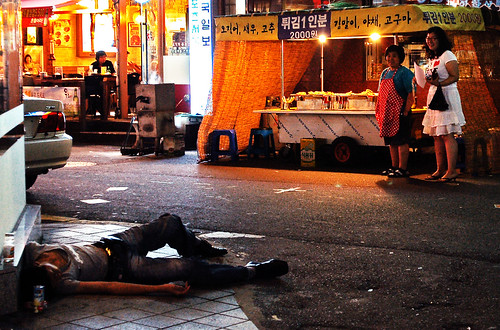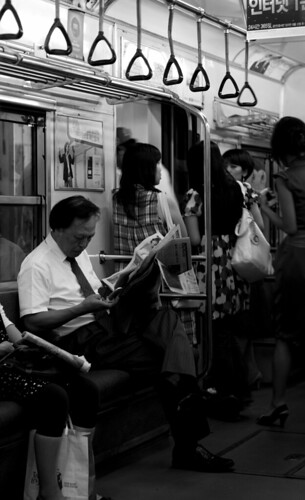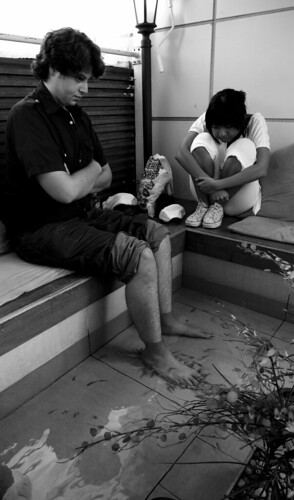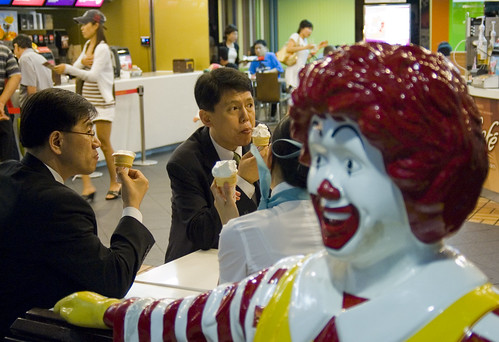
School begins tomorrow, ending a week long adventure traipsing through Seoul's streets, bars, clubs, cafes and shops.
I've watched legions of taxis swarm the streets as the subways stop running, the drivers hoping to earn a few bucks shuttling home the multitudes of unlucky youth.
Mopeds speed along the alleyways, accelerating between breaks in the crowd and screeching to a halt when the walkers become too numerous. If the traffic is at a standstill, they'll drive in-between the lanes and they'll navigate their way through the crosswalk crowd even when they have a red light; I've nearly been run over several times now.
Neon signs light up every avenue and alleyway and, apart from the major streets, people are free to roam right up the middle of the street. Tents pop up at each corner, steam emitting from giant vats of cheap street food, the owners eager to sell their snacks to young people suffering from the drunken munchies.
Groups of friends roam the streets, gallivanting from club to bar to club to bar again, and couples walk hand in hand, perhaps on their way to a bar or to one of Seoul's many late-night cafes.
It doesn't seem to matter whether it is Tuesday or Friday night; the people here will be out in force to enjoy their nights.
Korean businessmen incorporate after-hours drinking into their work life and older men are a common sight during the earlier hours of the night. Last night, this fellow received a business card during his dinner and he stashed it away among a disorganized handful of other business cards in his pocket while his friend was in the bathroom. Perhaps he was trying very hard to develop his business network over a few drinks.
For the youth, drinking doesn't seem to have such an obvious agenda. Often, I've seen groups of boys and groups of girls enter a bar to sit down, share a pitcher of beer, eat some Korean drinking snacks and talk the night away. Never having been to a bar in America, I can only assume this is a regular activity there too.
The difference, I think, between American and Korean drinking culture is that Americans go home after they go to a bar and Koreans go out to sing karaoke (and maybe drink some more there too). Basically, the karaoke rooms (노래방) are private rooms with couches, microphones, a coffee table and a television. They're basically soundproof, but I've walked by many and I can hear both Korean boys and girls singing the latest Korean pop songs.
At the end of the night, a taxi ride is often the best way for most to get home since the subways do stop running by midnight. The taxi drivers know this and they're out in force. I've stopped walking on the sidewalk to catch my bearings and within seconds there is a taxi driver pulling his car up next to me and speaking Korean to me. Not knowing what he is saying nor needing a taxi at all, I wave him away. The taxis are everywhere and they're cheap: a three or four dollar nightcap to a drinking adventure in Seoul.
*As a final note, the fellow I saw passed out near the main entrance of Yonsei in the photo above is not dead and the police arrived shortly after I shot this photograph to identify him, wake him up and take him away.








